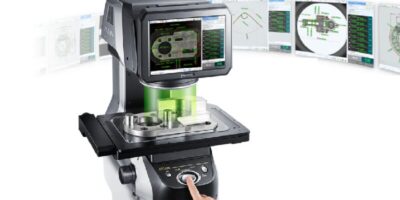Market Overview: The Distribution Automation Solutions Market refers to the market for technologies and systems that automate the monitoring, control, and management of electricity distribution networks. Distribution automation solutions help improve the efficiency, reliability, and flexibility of power distribution, enabling utilities to deliver electricity more effectively. These solutions encompass a range of technologies, including smart grid systems, sensors, communication networks, advanced metering infrastructure, and automation software.
Demand: The demand for distribution automation solutions is driven by several factors, including:
- Aging Grid Infrastructure: Many electricity distribution networks are aging and in need of upgrades and modernization. Distribution automation solutions help utilities enhance the performance and reliability of their grids by automating various processes and optimizing grid operations.
- Growing Energy Demand: Rising energy consumption, along with the increasing adoption of electric vehicles and renewable energy sources, places additional pressure on electricity distribution networks. Distribution automation solutions enable utilities to efficiently manage and accommodate the growing energy demand, ensuring reliable and uninterrupted power supply.
- Grid Resilience and Outage Management: Distribution automation solutions improve the resilience of distribution grids by enabling rapid fault detection, isolation, and restoration. These systems enhance outage management capabilities, minimize downtime, and improve overall grid reliability.
Scope: The scope of the distribution automation solutions market covers various aspects and applications, including:
- Smart Grid Infrastructure: Distribution automation plays a crucial role in smart grid implementations. It involves the integration of advanced sensors, communication networks, and control systems to enable real-time monitoring, automated fault detection, and load balancing across the grid.
- Advanced Metering Infrastructure (AMI): AMI systems form an essential part of distribution automation solutions. They enable two-way communication between utility companies and consumers, providing real-time energy consumption data and supporting demand response programs.
- Distribution Management Systems (DMS): DMS software solutions are used to monitor and control the distribution grid. These systems help utilities optimize grid operations, manage network assets, analyze data, and facilitate efficient energy distribution.
Trends:
- Integration of Renewable Energy Sources: Distribution automation solutions are adapting to accommodate the integration of distributed energy resources, such as solar and wind power. These solutions help utilities manage the intermittent nature of renewables, facilitate grid stability, and optimize energy flow.
- Big Data Analytics and Artificial Intelligence: The implementation of data analytics and artificial intelligence (AI) technologies in distribution automation solutions is on the rise. These technologies enable utilities to gain insights from vast amounts of data, improve grid forecasting, optimize energy distribution, and enhance decision-making.
- Cybersecurity and Grid Resilience: With increasing digitization and connectivity, grid cybersecurity has become a critical concern. Distribution automation solutions are incorporating robust cybersecurity measures to protect against cyber threats and ensure the resilience and integrity of the grid.
- Global Opportunities: The distribution automation solutions market presents several global opportunities, including:
- Developing Countries and Emerging Markets: Developing countries with expanding electricity infrastructure and increasing energy demand offer significant opportunities for distribution automation solutions. These regions can leapfrog traditional grid infrastructure and directly adopt advanced automation technologies.
- Grid Modernization Initiatives: Governments worldwide are investing in grid modernization projects to enhance the efficiency and reliability of their power networks. Distribution automation solutions form a critical component of these initiatives, creating opportunities for solution providers and technology vendors.
Challenges: The distribution automation solutions market also faces certain challenges, including:
- Cost and Return on Investment: The implementation of distribution automation solutions can involve significant upfront costs. Utilities need to carefully evaluate the investment and assess the long-term benefits and return on investment to justify the implementation.
- Interoperability and Standardization: Interoperability and standardization of distribution automation technologies are crucial for seamless integration and effective communication between various devices and systems. The lack of standardized protocols and interoperability can hinder the deployment and scalability of distribution automation solutions.
- Skilled Workforce and Training: The successful implementation and operation of distribution automation solutions require a skilled workforce trained in advanced technologies and system management. Utilities need to invest in training programs to ensure their staff has the necessary expertise to manage and maintain these solutions effectively.
Overall, the distribution automation solutions market offers significant opportunities driven by grid modernization, increasing energy demand, and the need for grid resilience. Addressing challenges related to costs, interoperability, and skilled workforce will be critical for widespread adoption and successful implementation of distribution automation solutions.
By visiting our website or contacting us directly, you can explore the availability of specific reports related to this market. These reports often require a purchase or subscription, but we provide comprehensive and in-depth information that can be valuable for businesses, investors, and individuals interested in this market.
“Remember to look for recent reports to ensure you have the most current and relevant information.”
Click Here, To Get Free Sample Report: https://stringentdatalytics.com/sample-request/distribution-automation-solutions-market/10965/
Market Segmentations:
Global Distribution Automation Solutions Market: By Company
- ABB
- Eaton
- Schneider Electric
- Siemens
- GE
- Hitachi
- Toshiba
- Fuji Electric
- Mitsubishi Electric
- Hyosung
- S&C Electric
- G&W Electric
- Kalkitech
- TBEA
- XD
Global Distribution Automation Solutions Market: By Type
- System-Level Distribution Automation Solutions
- Customer-Level Distribution Automation Solutions
Global Distribution Automation Solutions Market: By Application
- Industrial
- Commercial
- Residential
Global Distribution Automation Solutions Market: Regional Analysis
The regional analysis of the global Distribution Automation Solutions market provides insights into the market’s performance across different regions of the world. The analysis is based on recent and future trends and includes market forecast for the prediction period. The countries covered in the regional analysis of the Distribution Automation Solutions market report are as follows:
North America: The North America region includes the U.S., Canada, and Mexico. The U.S. is the largest market for Distribution Automation Solutions in this region, followed by Canada and Mexico. The market growth in this region is primarily driven by the presence of key market players and the increasing demand for the product.
Europe: The Europe region includes Germany, France, U.K., Russia, Italy, Spain, Turkey, Netherlands, Switzerland, Belgium, and Rest of Europe. Germany is the largest market for Distribution Automation Solutions in this region, followed by the U.K. and France. The market growth in this region is driven by the increasing demand for the product in the automotive and aerospace sectors.
Asia-Pacific: The Asia-Pacific region includes Singapore, Malaysia, Australia, Thailand, Indonesia, Philippines, China, Japan, India, South Korea, and Rest of Asia-Pacific. China is the largest market for Distribution Automation Solutions in this region, followed by Japan and India. The market growth in this region is driven by the increasing adoption of the product in various end-use industries, such as automotive, aerospace, and construction.
Middle East and Africa: The Middle East and Africa region includes Saudi Arabia, U.A.E, South Africa, Egypt, Israel, and Rest of Middle East and Africa. The market growth in this region is driven by the increasing demand for the product in the aerospace and defense sectors.
South America: The South America region includes Argentina, Brazil, and Rest of South America. Brazil is the largest market for Distribution Automation Solutions in this region, followed by Argentina. The market growth in this region is primarily driven by the increasing demand for the product in the automotive sector.
Visit Report Page for More Details: https://stringentdatalytics.com/reports/distribution-automation-solutions-market/10965/
Reasons to Purchase Distribution Automation Solutions Market Report:
- Comprehensive Market Insights: Global research market reports provide a thorough and in-depth analysis of a specific market or industry. They offer valuable insights into market size, growth potential, trends, challenges, and opportunities, helping businesses make informed decisions and formulate effective strategies.
- Market Analysis and Forecasts: These reports provide detailed analysis and forecasts of market trends, growth rates, and future market scenarios. They help businesses understand the current market landscape and anticipate future market developments, enabling them to plan and allocate resources accordingly.
- Competitive Intelligence: Global research market reports provide a competitive landscape analysis, including information about key market players, their market share, strategies, and product portfolios. This information helps businesses understand their competitors’ strengths and weaknesses, identify market gaps, and develop strategies to gain a competitive advantage.
- Industry Trends and Insights: These reports offer insights into industry-specific trends, emerging technologies, and regulatory frameworks. Understanding industry dynamics and staying updated on the latest trends can help businesses identify growth opportunities and stay ahead in a competitive market.
- Investment and Expansion Opportunities: Global research market reports provide information about investment opportunities, potential markets for expansion, and emerging growth areas. These reports help businesses identify untapped markets, assess the feasibility of investments, and make informed decisions regarding expansion strategies.
- Risk Mitigation: Market reports provide risk assessment and mitigation strategies. By analyzing market dynamics, potential challenges, and regulatory frameworks, businesses can proactively identify risks and develop strategies to mitigate them, ensuring better risk management and decision-making.
- Cost and Time Efficiency: Conducting comprehensive market research independently can be time-consuming and expensive. Purchasing a global research market report provides a cost-effective and time-efficient solution, saving businesses valuable resources while still gaining access to reliable and detailed market information.
- Decision-Making Support: Global research market reports serve as decision-making tools by providing data-driven insights and analysis. Businesses can rely on these reports to support their decision-making process, validate assumptions, and evaluate the potential outcomes of different strategies.
In general, market research studies offer companies and organisations useful data that can aid in making decisions and maintaining competitiveness in their industry. They can offer a strong basis for decision-making, strategy formulation, and company planning.
About US:
Stringent Datalytics offers both custom and syndicated market research reports. Custom market research reports are tailored to a specific client’s needs and requirements. These reports provide unique insights into a particular industry or market segment and can help businesses make informed decisions about their strategies and operations.
Syndicated market research reports, on the other hand, are pre-existing reports that are available for purchase by multiple clients. These reports are often produced on a regular basis, such as annually or quarterly, and cover a broad range of industries and market segments. Syndicated reports provide clients with insights into industry trends, market sizes, and competitive landscapes. By offering both custom and syndicated reports, Stringent Datalytics can provide clients with a range of market research solutions that can be customized to their specific needs
Contact US:
Stringent Datalytics
Contact No – +1 346 666 6655
Email Id – sales@stringentdatalytics.com




Leave a Reply